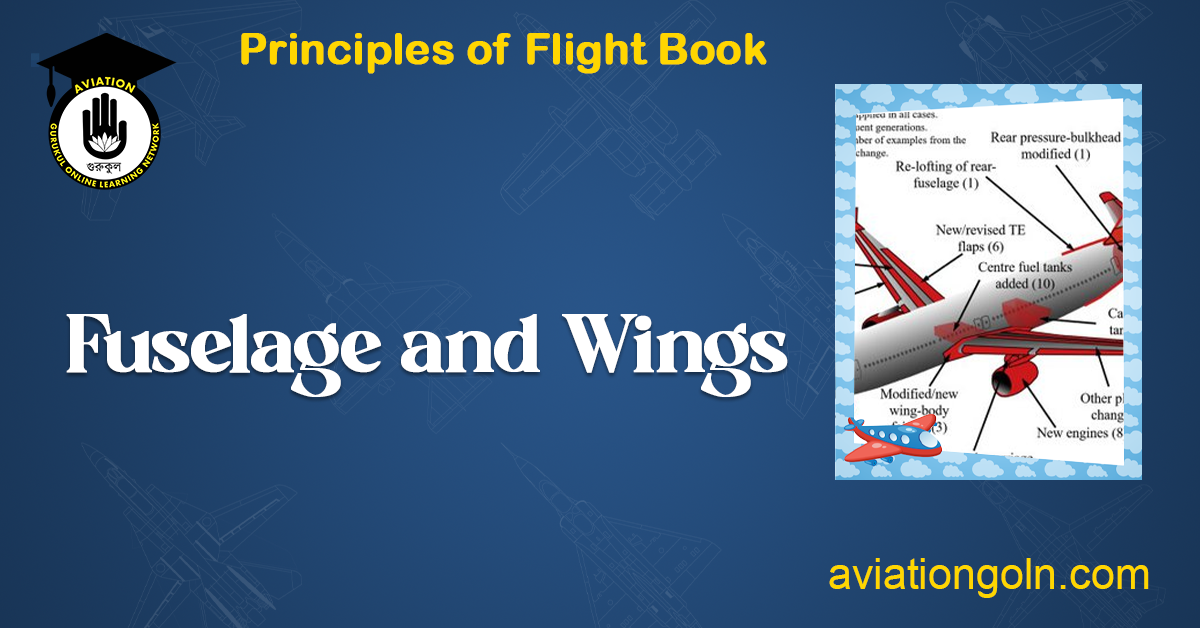The essence of an aircraft’s structural integrity and aerodynamic functionality rests with two key components: the fuselage and wings. These components not only define the overall look and feel of the aircraft but also play a significant role in determining its performance, safety, and durability.
Fuselage and Wings

1. Fuselage: The Aircraft’s Backbone
The fuselage is essentially the main body of an aircraft. It houses the cockpit, passengers, cargo, and most of the equipment. When thinking of the fuselage, one might liken it to the spine in vertebrates; it’s central, supportive, and critical for integration.
1.1. Design of the Fuselage
Depending on the aircraft’s purpose, fuselages are designed in different shapes and sizes. Common shapes include:
- Monocoque: Uses the skin of the aircraft to support most of the load. This design is more suited for rounder shapes and helps in weight reduction.
- Semi-monocoque: Combines the features of a full monocoque with a structural frame. This design offers strength and rigidity and is the most common type found in commercial aircraft.
1.2. Materials Used
Traditionally, the primary materials for fuselage construction were wood and fabric. However, with advances in technology, materials like aluminum alloys became the standard because of their strength-to-weight ratio and fatigue resistance. In recent years, composite materials like carbon-fiber-reinforced polymers (CFRP) are increasingly used due to their weight-saving potential and excellent fatigue resistance.
2. Wings: The Lift Generators
An aircraft’s wings are its primary lifting surfaces. They make it possible for the heavy machine to stay aloft.
2.1. Wing Anatomy
Aircraft wings are composed of several key parts:
- Main spar: The main longitudinal member that takes most of the torsion and bending loads.
- Ribs: These define the shape of the wing and give it its aerodynamic profile.
- Stringers: These are longitudinal members that help in distributing the aerodynamic loads and provide additional stiffness.
- Leading and Trailing Edges: The front and back sections of the wing. The leading edge is generally thicker and rounder, whereas the trailing edge is sharper.
2.2. Wing Configurations
Wing configurations vary based on their position and shape relative to the fuselage:
- High wing: Positioned above the fuselage, commonly found in cargo planes and some commercial aircraft.
- Low wing: Positioned below the fuselage, typically seen in commercial jets.
- Mid-wing: Positioned approximately halfway up the fuselage, often seen in some fighter jets.
Each design has its benefits regarding aerodynamics, stability, and ground clearance.
2.3. Wing Materials
Similar to fuselages, the shift in wing materials over the years has been from wood and fabric to metals, and more recently, to composites. Aluminum and its alloys have been the longstanding choice, offering a balance of lightness, strength, and workability.
Composite materials are now becoming more popular for wing construction. Their high strength-to-weight ratios and moldable properties make them suitable for crafting aerodynamically efficient wings with complex shapes.
3. Modern Material Advancements
The aerospace industry has been at the forefront of material advancements. The push for more fuel-efficient aircraft demands lighter structures without compromising strength.
3.1. Composites
The term “composite” refers to a material made from two or more constituent materials with significantly different physical or chemical properties. When combined, they produce a material with characteristics different from the individual components.
Benefits:
- Weight Reduction: Composites are typically lighter than metals, contributing to fuel savings.
- Flexibility in Design: They can be molded into complex shapes, providing aerodynamic advantages.
- Corrosion and Fatigue Resistance: Composites are less prone to corrosion compared to metals, and they exhibit superior fatigue properties.
3.2. Titanium Alloys
Titanium and its alloys have seen increased use in areas of the aircraft subjected to high temperatures, such as engine components and leading edges of wings.
Benefits:
- Strength-to-Weight Ratio: Titanium has a high strength-to-weight ratio, making it ideal for aircraft components.
- Corrosion Resistance: Titanium is resistant to corrosion, making it durable in harsh environments.
4. Challenges and Considerations
4.1. Cost
Advanced materials like composites and titanium are generally more expensive than traditional aluminum. The high costs often get passed on to consumers or result in reduced profit margins for manufacturers.
4.2. Repair and Maintenance
Repairing composites can be more challenging than metals. Specialized training and equipment might be required, potentially leading to longer grounding times for damaged aircraft.
4.3. Environmental Concerns
Manufacturing and disposing of composites can have environmental implications. The aerospace industry is continually researching ways to make the production process greener and ways to recycle these materials.
Conclusion
The fuselage and wings form the heart of any aircraft, dictating its performance, safety, and efficiency. Over the decades, as technology and materials have advanced, so have the designs and structures of these crucial components. The shift from traditional materials like wood and metals to composites and titanium alloys showcases the aerospace industry’s adaptability and commitment to progress. As the journey continues, one can only expect further innovations that will redefine the boundaries of aviation.
